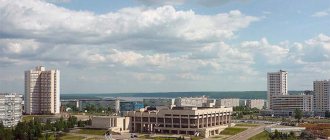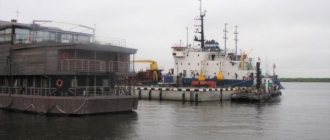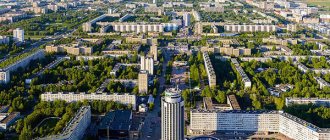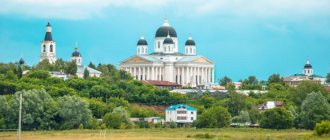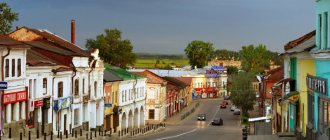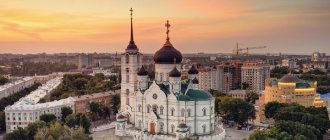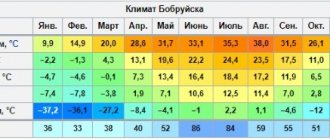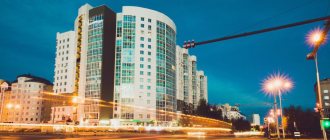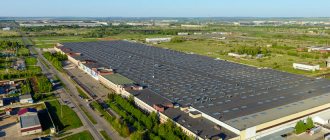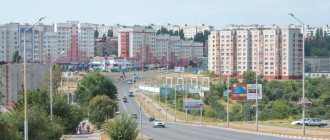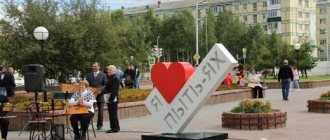Where are Naberezhnye Chelny located on the map of Russia
This is a large city, which from November 1982 to January 1988 was called Brezhnev. It is located in the northeastern part on the left bank of the river. Kama and reservoirs of Nizhnekamsk. On the border there are the following districts: Elabuga and Tukaevsky.
Naberezhnye Chelny on the map of Russia is located near the city, which is 40 km in the West, Nizhnekamsk. In the same direction - Moscow is 1032 km away and Kazan is 237 km away. The nearest city in the east is Ufa, located 320 km away, and Chelyabinsk is 750 km away.
In the northwest is Kirov, in the southwest are Ulyanovsk and Samara. From the northeast, the closest is Yekaterinburg, and from the southeast - Orenburg and Magnitogorsk.
What do residents of Russian settlements call themselves?
For example, with the help of the suffixes “an” and “yan”, catoikonyms are formed for residents of cities ending in “tsk” and “sk” (Khabarovsk resident in Khabarovsk, Luchanin in Lutsk, Bratchanin in Bratsk, etc.). This rule explains the funny names for many kaitokonyms:
- residents of Pskov - Pskovite and Pskovite (the name “Pskovitch” is also often used);
- residents of Kursk - Kuryanin and Kuryanka;
- residents of Smolensk - Smolyanin and Smolyanka.
But there are several exceptions to this rule: Bryansk residents - in Bryansk, Nizhnekamsk residents - in Nizhnekamsk, Rybinsk residents - in Rybinsk, Tobolsk residents - in Tobolsk.
Residents of settlements whose names end in -ivo, -ovo and -ino usually receive an ethno-horonym with the suffix “ts” - like Ivanovo residents in Ivanovo, but the situation is different with Kemerovo residents (Kemerovo), Kstovo residents (Kstovo).
Often the name of the residents is influenced by the old name of the locality. For example, Arkhangelsk was previously called the Arkhangelsk city, and the inhabitants, accordingly, were called Arkhangelsk residents. The name remains to this day.
Arkhangelsk residents celebrate the 435th anniversary of their hometown, 2022. Photo: Artyom Kelarev, m.region29.ru
Residents of Torzhok are called Novotors, since the city was previously called Novy Torg. The city of Engels had the name Pokrovsk until 1931, therefore, along with the catoikonym “Engelsites,” the old name “Pokrovchane” is also used.
For many years, local historians have been arguing about why the residents of the city of Mtsensk call themselves Amchans. The reason is that earlier the common people called the city Amchensk, hence the name of the inhabitants.
Often, what city residents call themselves does not coincide with the name used at the federal level, for example in the media.
- For example, residents of the city of Pyatigorsk call themselves “Pyatigorsk residents,” while in central newspapers the name “Pyatigorsk” is also found.
- The women of Yaroslavl call themselves exclusively “Yaroslavny”, while outside the region the name “Yaroslavka” predominates.
- Residents of Murom call themselves “Muromtsy” and “Muromlyane”, and outside the city you can also find the use of “Muromchane”.
Sometimes you can find such pearls... Photo: time-go.ru
It is not easy to immediately understand which katoikonym to use to name residents of cities with complex double names. There are also many unusual names found here. For example, the residents of Gus-Khrustalny are called Gusevchane (also Gusevtsi); residents of Staraya Russa - Rushans; residents of Veliky Ustyug - Ustyugans; residents of Naberezhnye Chelny are Chelny residents.
Other non-standard and sometimes completely unexpected names of residents:
- Pinsk: pinchuki;
- Slantsy: slantsevchane;
- Evpatoria: Evpatorians;
- Vologda: Vologda residents;
- Red: reds;
- Myshkin: Myshkinites;
- Yaya: yachans.
The katoikonyms of residents of cities with similar names are interesting.
- For example, in Nizhny Novgorod there are Nizhny Novgorod residents, and in Veliky Novgorod there are Novgorodians; in Rostov the Great - Rostovites, and in Rostov-on-Don - Rostovites. And the residents of Volzhsk and Volzhsky are most often called the same - Volzhans.
Yevpatorians celebrated Spring and Labor Day with a Literary Parade Photo: pre.e-zdravnitsa.ru
M.V. Lomonosov began to study the principles and patterns of naming settlements. Until now, this area remains incompletely studied. Even for a Russian person, it is sometimes difficult to find out what the inhabitants of a particular city are called, and for foreigners, perhaps, this is completely incomprehensible.
Tags: katoikonim, city residents, townspeople, Russian cities, unusual names
Climate and weather by month. Best time to visit
Chelny is located in a zone of temperate continental climate, but it is characterized by large annual temperature fluctuations. The duration of the winter period is 1-4 calendar months. Big frosts are a rare occurrence here, as are warming temperatures. The coldest month is January. The summer period is characterized by high air temperatures, the warmest month is July.
Precipitation is evenly distributed throughout the year, with a slight increase in summer and autumn. But this distribution does not affect the change in average humidity.
The Nizhnekamsk reservoir has a greater impact. Its close location increases the level of humidity in the city. The average annual precipitation is 650 mm. A more detailed report on temperature changes can be found in Table 1.
Table 1. Average temperatures in Naberezhnye Chelny
| Month | Average temperature, °C |
| January | — 10.3 °С |
| February | — 9.8 °C |
| March | — 5.4 °C |
| April | — 4.2 °С |
| May | 13.1 °C |
| June | 18.7 °C |
| July | 20.6 °C |
| August | 17.0 °C |
| September | 12.4 °C |
| October | 4.6 °C |
| November | — 5.4 °C |
| December | — 10.9 °C |
The average annual temperature is 5.2°C , the average annual wind speed is 4.4 m/s, and the average annual air humidity is 78%.
It is better to visit Naberezhnye Chelny in winter or spring; it is also recommended to visit there in early June. Since in autumn there is an increased amount of precipitation, and in summer the air can warm up to 35-40 °C.
Map
| Naberezhnye Chelny: maps |
Naberezhnye Chelny: photos from space (Google Maps) Naberezhnye Chelny: photos from space (Microsoft Virtual Earth)
| Naberezhnye Chelny. Nearest cities. Distances in km. on the map (in brackets along roads) + direction. Using the hyperlink in the distance , you can get the route (information courtesy of the AutoTransInfo website) | |||
| 1 | Mendeleevsk | 18 (35) | WITH |
| 2 | Elabuga | 22 (21) | Z |
| 3 | Nizhnekamsk | 38 (44) | Z |
| 4 | Grakhovo (Udmurt Republic) | 43 (113) | NW |
| 5 | Menzelinsk | 44 (57) | IN |
| 6 | Alnashi (Udmurt Republic) | 49 (73) | WITH |
| 7 | Zainsk | 54 (69) | SW |
| 8 | Sarmanovo | 55 (57) | YU |
| 9 | Mamadysh | 62 (80) | Z |
| 10 | Muslyumovo | 70 (119) | SE |
| 11 | Kamskie Polyany | 70 (91) | SW |
| 12 | Mozhga | 79 (111) | WITH |
| 13 | Kizner (Udmurt Republic) | 81 (156) | NW |
| 14 | Kiyasovo (Udmurt Republic) | 81 (191) | NE |
| 15 | Jalil | 83 (93) | YU |
| 16 | Karakulino (Udmurt Republic) | 88 (269) | IN |
| 17 | Sosnovka | 89 (168) | NW |
| 18 | Almetyevsk | 93 (126) | YU |
| 19 | Agryz | 94 (147) | NE |
| 20 | Krasnaya Polyana (Kirov region) | 95 (160) | NW |
| 21 | Lower Maktama | 97 (119) | YU |
| 22 | Malaya Purga (Udmurt Republic) | 97 (151) | NE |
| 23 | Vyatskiye Polyany | 97 (153) | NW |
| 24 | Agidel | 97 (296) | IN |
| 25 | Novosheshminsk | 104 (130) | SW |
| 26 | Kukmor | 105 (140) | NW |
| 27 | Aktanysh | 105 (149) | IN |
| 28 | Aktobe | 106 (143) | YU |
| 29 | Aznakaevo | 107 (123) | SE |
| 30 | Bakaly (Republic of Bashkortostan) | 108 (271) | SE |
a brief description of
The city is located in the Kama region, 225 km east of Kazan. A pier on the left bank of the Kama, 17 km from the Krugloye Pole railway station on the Agryz-Akbash line.
On the outskirts of the city is the climatic resort area of Tarlovka.
Territory (sq. km): 171
Information about the city of Naberezhnye Chelny on the Russian Wikipedia site
Historical sketch
In the 19th century — pier Berezhnye Chelny, Ufa province.
City since 1930. In 1982-1988. was called Brezhnev after the name of the Soviet party and statesman L.I. Brezhnev (1906-82).
The rapid development of urban construction began in 1969 in connection with the construction of KamAZ.
In the name, the word chelny is a reinterpretation of the Turkic challa “mountain, slope, naked hill” into the Russian cheln “boat”, and the definition embankments indicates the location of this hill on the shore, compare with the version used in the 19th century: Berezhnye Chelny. The plural form serves as a means of forming a toponym (Luzhniki, Gorki).
In 1994, the urban districts Avtozavodskoy and Komsomolsky were abolished.
Municipal indicators
| Index | 1999 | 2001 | 2003 | 2005 |
| Demography | ||||
| Number of births, per 1000 population | 8.5 | 9.4 | 10.8 | 10.6 |
| Number of deaths, per 1000 population | 6.6 | 7.4 | 7.9 | 8.1 |
| Natural increase (decrease), per 1000 population | 1.9 | 2 | 2.9 | 2.5 |
| Standard of living of the population and social sphere | ||||
| Average monthly nominal accrued wages, rub. | 1509.3 | 3093.9 | 4993.8 | 7438.3 |
| Average housing area per inhabitant (at the end of the year), sq.m. | 16.5 | 16.8 | 17.2 | 17.7 |
| Number of preschool institutions, pcs. | 102 | 101 | 99 | 98 |
| Number of children in preschool institutions, thousand people | 19.8 | 19.8 | 20.2 | 21.1 |
| Enrollment of children in preschool educational institutions (at the end of the year), as a percentage of the number of children of the corresponding age, % | 70.2 | 72.1 | ||
| Number of daytime educational institutions (at the beginning of the school year), pcs. | 90 | 93 | 91 | 80 |
| Number of students in daytime educational institutions, thousand people | 89.5 | 78.2 | 66.2 | 55 |
| Number of doctors, people. | 1832 | 1873 | 1895 | 1900 |
| Number of nursing staff, people. | 6157 | 5820 | 5875 | 5687 |
| Number of hospital institutions, pcs. | 16 | 16 | 16 | 16 |
| Number of hospital beds, thousand units | 4.1 | 4.1 | 4.1 | 4.2 |
| Number of medical outpatient clinics, pcs. | 33 | 36 | 33 | 31 |
| Capacity of medical outpatient clinics, visits per shift, thousand units. | 10.2 | 11.2 | 10.9 | 10.8 |
| Number of registered crimes, pcs. | 11629 | 10908 | 8160 | 14710 |
| Persons who committed crimes were identified, persons. | 6292 | 6219 | 4085 | 4551 |
| Economy, industry | ||||
| Number of enterprises and organizations (at the end of the year), pcs. | 10936 | 14180 | 39524 | 27884 |
| Number of operating enterprises by type of activity: mining (at the end of the year), pcs. | 2 | |||
| Number of operating enterprises by type of activity: manufacturing (at the end of the year), pcs. | 149 | |||
| Number of operating enterprises by type of activity production and distribution of electricity, gas and water (at the end of the year), pcs. | 21 | |||
| Volume of shipped goods of own production by type of mining (in actual prices), million rubles. | 0.6 | |||
| Volume of shipped goods of own production by type of manufacturing (in actual prices), million rubles. | 75380.1 | |||
| Volume of shipped goods of own production by type of production and distribution of electricity, gas and water (in actual current prices), million rubles. | 1882.1 | |||
| Construction | ||||
| Volume of work performed by type of activity “Construction” (until 2004 - volume of work performed under construction contracts), million rubles. | 1091.6 | 3335.4 | 3876.7 | 8767.7 |
| Commissioning of residential buildings, thousand sq.m. of total area | 94 | 76.3 | 70.1 | 159.9 |
| Commissioning of residential buildings, apartments | 993 | 893 | 1059 | 1733 |
| Commissioning of preschool institutions, places | 0 | 0 | 0 | 0 |
| Commissioning of educational institutions, places | 0 | 0 | 0 | 0 |
| Commissioning of hospital facilities, beds | 0 | 0 | 0 | 0 |
| Commissioning of outpatient clinics, visits per shift | 0 | 0 | 0 | 0 |
| Transport | ||||
| Number of bus routes (in intracity traffic), pcs. | 88 | 44 | 61 | 49 |
| Number of tram routes, pcs. | 8 | 8 | ||
| Length of operational tram tracks (at the end of the year), km | 48.4 | 48.4 | ||
| Number of trolleybus routes, pcs. | 0 | 0 | ||
| Number of passengers transported by buses per year (in intracity traffic), million people. | 121.5 | 122.9 | 97.6 | 51.8 |
| Number of passengers transported by trams per year, million people. | 43.4 | 55.4 | 53.1 | |
| Number of passengers transported by trolleybuses per year, million people. | 0 | |||
| Connection | ||||
| Number of residential telephone sets of the city public telephone network, thousand units. | 100.4 | 101.3 | 126.2 | 138.3 |
| Number of payphones of the city telephone network (including universal ones), pcs. | 1200 | 798 | ||
| Trade and services to the population | ||||
| Retail trade turnover (in actual prices), million rubles. | 6142.1 | 11011.9 | 16007.4 | 22906 |
| Retail trade turnover (in actual prices), per capita, rub. | 11835 | 21337 | 31216 | 44975 |
| Index of physical volume of retail trade turnover, % compared to the previous year | 106.6 | 111.7 | ||
| Public catering turnover (in actual prices), million rubles. | 277 | 613.7 | 960.8 | 1376.8 |
| Index of physical volume of public catering turnover, % compared to the previous year | 120.1 | 96.5 | ||
| Number of stores, pavilions (at the end of the year), pcs. | 114 | 116 | ||
| Sales area of shops, pavilions (at the end of the year), sq.m. | 16783 | 36971.8 | ||
| Volume of paid services to the population (in actual prices), million rubles. | 1292.6 | 2115.5 | 4177.4 | 8461.6 |
| Volume of paid services to the population (in actual prices), per capita, rub. | 2487.7 | 4098.3 | 8146.3 | 16614.3 |
| Volume of household services to the population (in actual prices), million rubles. | 267.1 | 420.5 | 635.7 | 1402.4 |
| Volume of household services to the population (in actual prices), per capita, rub. | 514.1 | 814.6 | 1239.7 | 2753.6 |
| Investments | ||||
| Investments in fixed assets (in actual prices), million rubles. | 645.3 | 2421.7 | 1805.8 | 3416.6 |
| Share of investments in fixed assets financed from budgetary funds in the total volume of investments, % | 10.1 | 14.2 | 7.9 | 6.4 |
Data sources:
- Regions of Russia. Main characteristics of the constituent entities of the Russian Federation: statistical collection. Goskomstat of Russia. - M:, 2003.
- Regions of Russia. Volume 1. Statistical collection. Goskomstat of Russia. - M:, 2001. p. 322
- Regions of Russia. Basic socio-economic indicators of cities. Statistical collection. Rosstat. - M:, 2005. p. 215
- Transport in Russia: Statistical collection. Goskomstat. - M:, 2003. pp. 110, 120
- Transport in Russia: Statistical collection. Rosstat. - M:, 2005. pp. 117, 127
- Regions of Russia. Basic socio-economic indicators of cities. 2006. Statistical collection. Rosstat. - M:, 2006. p. 215
Economy
The leading industrial enterprise of the city is the Kama Association for the Production of Heavy Trucks (KAMAZ). Nizhnekamsk hydroelectric power station.
Food enterprises (meat processing plant, bakery plant, brewery, municipal food processing plant, as well as a meat processing plant and dairy plant in the village of Sidorovka), woodworking (furniture factory) and light industry.
Mechanical repair. Production of building materials.
Main enterprises
THERMAL POWER PLANTS
Naberezhnye Chelny CHPP
423810, Republic of Tatarstan, Naberezhnye Chelny,
Offers:
electricity, heat energy
ELECTRICAL INDUSTRY
State Unitary Enterprise "Tatelektromash"
423807, Republic of Tatarstan, Naberezhnye Chelny,
Offers:
DC machines, electric machines, washing machines
AUTOMOTIVE INDUSTRY
OJSC "KAMAZ"
423808, Republic of Tatarstan, Naberezhnye Chelny, M. Jalil Ave., 29
Offers:
trucks and cars
PULP AND PAPER INDUSTRY
JSC "Naberezhnye Chelny Cardboard and Paper Mill"
423808, Republic of Tatarstan, Naberezhnye Chelny,
Offers:
cardboard boxes, labels, toilet paper
BUILDING MATERIALS INDUSTRY
LLC (subsidiary) “Mortar-concrete”
423800, Republic of Tatarstan, Naberezhnye Chelny, st.
Gidrostroiteley, 11 Offers:
concrete, prefabricated reinforced concrete structures, welded metal structures
Culture, science, education
Kama Polytechnic Institute (KampI), pedagogical institute.
Puppet Theatre.
Museums, galleries, exhibition halls
Museum of the History of the City of Naberezhnye Chelny 423800, Republic of Tatarstan, Naberezhnye Chelny, st.
Gidrostroiteley, 16 Telephone(s) Naberezhnye Chelny Art Gallery 423810, Republic of Tatarstan, Naberezhnye Chelny, Mira Ave., 52/16 Telephone(s)
Architecture, sights
The master plan, approved in 1973 (architect B.R. Rubanenko and others), is based on a comprehensive microdistrict development of large-panel houses.
| Population by year (thousands of inhabitants) | |||||||
| 1897 | 1.0 | 1976 | 231 | 2001 | 513.5 | 2013 | 519.0 |
| 1926 | 4 | 1979 | 301.4 | 2003 | 509.9 | 2014 | 522.0 |
| 1931 | 5.0 | 1982 | 374 | 2005 | 508.0 | 2015 | 524.4 |
| 1939 | 9.3 | 1986 | 459 | 2006 | 507.2 | 2016 | 526.8 |
| 1959 | 19.1 | 1989 | 500.3 | 2007 | 506.4 | 2017 | 529.8 |
| 1967 | 33 | 1992 | 514.4 | 2008 | 506.1 | 2018 | 532.5 |
| 1970 | 37.9 | 1996 | 528.7 | 2010 | 510.3 | 2019 | 533.9 |
| 1971 | 55 | 1998 | 520.3 | 2011 | 513.2 | 2020 | 533.8 |
| 1973 | 126 | 2000 | 514.7 | 2012 | 516.6 | 2021 | 532.1 |
Types of recreation in the city for tourists
There are many cities on the map of Russia that are famous for their attractions and where you can relax both alone and with the whole family. Naberezhnye Chelny was no exception. Here everyone can find adventures to suit their taste, even those who prefer cultural activities.
Leisure
For tourists who cannot imagine their pastime without sports, there are sports complexes, playgrounds and swimming pools in the city.
- “Dolphin” is one of the largest in Chelny, accommodating several baths: a large one for adults, 50 m long and 8 lanes wide, 2 small children’s 10 and 16 m. Competitions of various levels have been held here many times, and now the pool has become a place for training in synchronized swimming.
- "Dulkyn" — the swimming pool, which is part of the Vityaz Youth Sports School, has a bath 25 m long, 5 lanes wide and 5 m deep. Here you can not only swim, but also jump from a tower 5 or 3 m high.
- "Albatross" is the newest swimming pool in the city. Opened in 2016. The length of the pool bowl is 50 m, the width is 8 lanes, and the depth is 3.2 m. This building houses a synchronized swimming center. Only adults and children at least 14 years old with their parents are allowed to exercise here. The pool is located at New City, Khasan Tufan Ave., 3e.
- The ice sports palace on Syuyumbike Avenue, 44 is the home site of the Chelny club and a base for training children. The palace can accommodate 1,500 people. Here you can see not only hockey matches, but also concerts, as well as various performances. In addition, on the territory there are halls for choreography, acrobatics and training with exercise equipment and a swimming pool with a sauna. You can also rent skates in the palace and go for a ride. in any season.
- go ice skating on the court of the Polar Bears hockey club, located at New Town in complex 7.
- Fans of extreme recreation can visit Grenada Park, where there is an extreme park. There you can try yourself as a skater. Also in the city you can jump from a bridge, dive under water or go skiing.
Cultural recreation
People who prefer a quiet and cultural holiday will be able to stroll along the famous Central Street in the village of GES. This is a historical place that previously had the name Dvoryanskaya. From the mid-19th century until the 60s of the 20th century, it was the center of the village, and then the city, where the administration was located.
Now it has been reconstructed and is open only to pedestrians . Now on its territory there is an arch as a decoration and an exhibition that tells about the history of the formation of the city. The street is well lit in the evening and at night. Also, as part of the reconstruction, the façade of some nearby houses was restored.
You can visit the place where all city holidays are held - Maidan of the Pribrezhny Park . In the center there is a stage equipped with a screen. Around it there are stands under a canopy. Their capacity is 15 thousand people.
For art lovers, Naberezhnye Chelny has many theatres, museums, cinemas, monuments and sculptures.
Vologda
Who lives in this city - Vologda residents, Vologda residents, Volograd residents? Close, but wrong. The local residents should be called Vologda residents. It is interesting that people associate this city with Siberia, because people were also sent into exile here, in particular, Joseph Stalin served his sentence here.
Where to go with children
Naberezhnye Chelny on the map of Russia is a city where everyone can find something to their liking. There are also many places that you can visit with children. For example, the swimming pool included in the Olympic sports complex.
The building was built back in 1979. Training in boxing, martial arts, gymnastics and swimming takes place here. The length of the pool is 25 m and the width is 6 lanes. In addition, there is a bathtub where even the smallest ones can be taught to swim.
The hippodrome is located in the New Town on Chulman Avenue near the forest area that is part of the Coastal Park. In summer you can attend equestrian competitions here, and in winter you can watch car races. In addition, the hippodrome is used as one of the sites for Sabantuy and rider training
At the intersection of 40 Let Pobeda Street and Belyaev Avenue there is a karting track. It appeared in 1980, and 10 years later a racing track was equipped here. Its length is 0.9 km and its width is 10 m. In 2015, the territory of the karting track came under the care of the KAMAZ-Master team.
They reconstructed the track, installed fences and opened a karting school. Children over 7 years old who participate in competitions are taught here. Also, anyone can rent a kart and go for a ride.
Mtsensk
A small town made famous by Nikolai Leskov, who wrote the work “Lady Macbeth of Mtsensk”. There are also many variants of names here - Mtsensk, Mtsensk, Mtsensk residents? But they are all wrong. The name is not at all consonant with the name of the city - Amchane.
It turns out that the settlement was previously called Amchansk, which is where the Amchansk people came from.
City monuments
A huge number of different monuments of different themes have been built on the territory of the city.
For example, there is a series of sculptures dedicated to famous people:
- Gabdulla Tukay (2017);
- Musa Jalil (author - V. Demchenko, 2011);
- Vladimir Vysotsky (authors: G. Ivanov, L. Zimina, 1985);
Monument to Vladimir Vysotsky in Naberezhnye Chelny - Rais Belyaev (author - V. Nesterenko, 2003);
- Evgeny Batenchuk (author - V. Nesterenko, 1998);
- Sergey Titov (authors: S. Vorobiev, V. Manukyan, 2002);
- Ravil Nizametdinov (author - M. Gasimov, 2012);
- IN AND. Lenin (architect V. Manukyan, sculptor M. Gasimov).
From a series of monuments dedicated to various types of human activity, the following can be distinguished:
- For KAMAZ vehicle builders;
- police officers who died on duty;
- border guards and their dogs;
- shuttles
Like any city in Russia, Naberezhnye Chelny has monuments dedicated to the Great Patriotic War and the people who fought for their Motherland. In addition, in Naberezhnye Chelny there is a series of monuments that are dedicated to transport. For example, on the streets of the city you can find an exhibit of a tram car, a fire engine, a cash-in-transit vehicle and a bicycle.
Gus-Khrustalny
Again, a compound name of the city, famous for its crystal factory, where glass and crystal are made. Usually people call local residents with complex words, for example, Gusevchane, Khrustalchane, Gus-Khrustalchane. The first option is correct, but the population itself prefers to call themselves Gusevites to make it easier.
Museums
One of the most popular museums in Naberezhnye Chelny is the local history museum, located on Gidrostroiteley Street, 16. It was founded in 1972 and 4 years ago, in 2014, it was called the Museum of City History.
This is a two-story building, on the first level of which there is an exhibition telling about the history of KAMAZ production, on the second - the entire history of the city and its inhabitants, from its foundation to the events of the Second World War. Between the floors there are exhibits about the life of the population during the Second World War. More than 52 thousand museum pieces of history are stored here.
The art gallery located on Mira Avenue stores artistic treasures of art. The basis of the museum exhibition is made up of exhibits from the Museum of the Pushkin Museum of the Republic of Tatarstan. The gallery’s management began to form its own funds only in 2006.
At the Museum of Ecology and Nature Conservation you can see more than 5 thousand exhibits of wildlife and about 20 sets of museum purposes. Exhibitions of various significance, as well as environmental competitions, are regularly held here.
The Museum of “Military Glory” at 100 Moskovsky Prospekt was created with the help of the Chelny search team. Its members collected exhibits found at battle sites during the Second World War. Here you can find personal belongings of soldiers, weapons, military equipment and ammunition. There is also a cinema hall on the territory of the museum.
In addition, the city has a KAMAZ automobile museum. In the village of Elevatornaya Gora on Traktovaya Street there is the Kama Bread Museum. In 2012, the Museum of the History of Fire Protection was opened on the territory of the fire department on Yashlek Street, 9. AT Nizametdinov Street, 26 you can find the Museum of the History and Military Glory of the Automobile Troops, where the most famous and rare equipment from the war is collected.
NABEREZHNYE CHELNY
NABEREZHNYE CHELNY, a city in Russia, in the north-east. parts of Tatarstan, the center of the city district of the same name and the Tukaevsky municipal district. Us. 532.1 thousand people (as of 1.1.2021); the second largest city in Tatarstan after Kazan. N. Ch. is one of the centers of the urban agglomeration (over 1 million inhabitants), which also includes the cities of Elabuga, Nizhnekamsk and others. The port is on the left bank of the Nizhnekamsk reservoir (on the Kama River). Railroad station. Road junction. Begishevo International Airport (southwest of the city).
Story
Naberezhnye Chelny. Panorama of the city.
In 1626, a group of Elabuga peasants led by F. Popov founded the settlement of Chalninsky Pochinok (from the late 1640s, the village of Mys-Chelny, later Mysovye Chelny, from the 1920s, Krasnye Chelny). From 1630–40s existed s. Embankment Sloboda (Berezhnye Chelny, from the 1910s N. Ch.). In 1650, the Chelny fortress was built to protect them from nomads (dismantled in 1652). All R. 17th century fairs were held in Mysovye Chelny and Naberezhnaya Sloboda. In the 2nd half. 17 – 1st half. 18th centuries villages were repeatedly ruined during the Bashkir-Tatar uprisings; During the Pugachev uprising of 1773–75, their residents were mobilized into the rebel troops and supplied them with food. In the beginning. 19th century at the village Berezhnye Chelny, the Chelny wharf arose (it specialized mainly in grain transshipment, from the early 1840s one of the largest in the lower reaches of the Kama), used to ship through it. including cargo from fairs held in Menzelinsk; offices of large shipping companies operated. In 1912–17, an elevator (the third in terms of storage volume after Novorossiysk and Samara) and an industrial facility were built here. enterprises. In 1921–26, from 1930 the city of N. Ch. (in 1926–1930 the village of Chelny). Center of the Naberezhnye-Chelninsky (Chelninsky) canton (1921–1930), Chelny district (since 1930, renamed Tukaevsky in 1976) of the Tatar Autonomous Soviet Socialist Republic, Tatar SSR (1990–92), Republic of Tatarstan (since 1992). In the 1930s the village became part of N.Ch. Red Chelny. Development of the city in the 2nd half. 20th century associated with the development of oil fields in the southeast of Tatarstan, the construction of the Nizhnekamsk hydroelectric power station and the Kama complex of factories for the production of heavy-duty vehicles (KAMAZ). In 1982–88 the city was called Brezhnev (in honor of L.I. Brezhnev). In 1984, the villages of Orlovka, Sidorovka and others were included in the city; in 2006 – p. Borovetskoye (all known from the 1630s–40s). Since 2005, the center of the city district of the same name and the Tukaevsky municipal district. In 2016 it received the status of a territory of rapid socio-economic development.
Archeology
On the territory of the city, settlements and burial grounds of the Srubnaya culture (Naberezhnye Chelny, Betkinsky, etc.) and the Prikazansky culture (Krasnoklyuchinsky, Kzyltauskoye), settlements of the Imenkovsky culture (Naberezhnye Chelny, Chabyinskoye), and the remains of the Bulgar and Bulgaro-tats were studied. settlements of the 13th–16th centuries. (Orlovskoe, Samoskakovskoe, etc.).
Architecture
Naberezhnye Chelny. Matrimonial Palace. 2007–08. Architects E. N. Pestov, S. G. Popov.
Preserved: c. Saints Cosmas and Damian (1845–59) and the Holy Ascension Cathedral (1872–89) in the Russian-Byzantine style, merchant. houses and shops on the street. Central (late 19th – early 20th centuries), former. the dacha of the merchant D.I. Stakheev on the shore of the Nizhnekamsk reservoir (1908–09; since 1927 the Tarlovsky sanatorium), the Chelny elevator (1914–17). In the 1970s–80s. the city was built up according to the 1973 general plan (architect B. R. Rubanenko and others) with a rectangular layout of “complexes” and wide, extended avenues. The following buildings were erected: 9- and 12-story buildings, lined with shuttle tiles; KamAZ stadium (1975–1977), Transagency building (1977, architect G. Burkov), 14-story Tatarstan hotel (1977–78, architects M. Kh. Agishev, R. Kh. Nasyrov, M. G. Khairullin). In 1982–91, Enthusiasts Boulevard was decorated with monumental compositions (the sculpture “Guardian Angel” by I. M. Khanov, 1991). In the 1990–2000s. built: 24-storey City Center Hotel (1980s – 2008), Ice Sports Palace (2005), Wedding Palace (2007–08, architectural workshop of E. N. Pestov and S. G. Popov) ; mosques (including the Great Cathedral “Taube”, 1989–92, architect M. Basyrov; “Abuzar”, 1993, architects V. A. Manukyan, T. G. Ulatova; “Ikhlas”, 1993–2005, architect Manukyan) and churches (St. Seraphim of Sarov, 1996–2005; wooden Old Believer church of the Prophet Elijah; wooden church of the Nativity of Christ, 2009). Monument of Glory (1975, sculptor Khanov, architect Nasyrov). To the north on the outskirts of the city is the Borovets Keys natural monument with a landscaped pond ensemble. Near N. Ch. preserved: classic. Church in honor of the Vladimir Icon of the Mother of God (1814) in the village. Betki, Trinity Church (1835–52) in the village. Novotroitskoe.
Centers of science and culture
Naberezhnye Chelny State Pedagogical University (1990), a number of non-state universities, branches of universities in Kazan, Moscow and Nizhny Novgorod. Center. mountains b-ka (1972; 29 branches). State Museum of the History of the City (1972), Museums of the History and Military Glory of the Automobile Troops (1986), Ecology and Nature Conservation (2000). Art Gallery (1980; branch of the State Museum of Fine Arts of the Republic of Tatarstan). Russian dramatist. theater "Masters" (1975), puppet theater (1987), Tat. dramatic theater (1990). Concert halls: them. S. Sadykova (1988), Organ (2005; an organ from the Czech company “Riger Closs” is installed in the hall). Chamber orchestra "Province" (1989). Festivals: international puppet theater “Workhorse” (since 2008, once every 2 years), regional theater “Characters” (since 2005, annually), “Organ Assemblies” (2010).
Sport
Among sports competitions, the most popular is football (the KAMAZ team was founded in 1981; a participant in the Russian championships in the top division 1993–97; in the 2020/21 season it plays in the championship of the Professional Football League at the stadium of the same name, built in 1977, reconstructed in 2016 and accommodating 6.2 thousand spectators) and rally [crews of the KAMAZ-Master team, 1988 – 17-time winners of the prestigious Dakar rally (formerly Paris-Dakar) in 1996–2020]. The largest sports facilities in N. Ch. are the Stroitel stadium (1979; more than 9 thousand seats) and the Ice Sports Palace (2004; 1.5 thousand seats).
Farm
N. Ch. is one of the leading industrial centers of Tatarstan. The largest enterprise - the group (1969; leader in the production of heavy trucks in the Russian Federation) produces trucks, trailers, buses, electric buses, special vehicles, engines, and power units. Operating (2010; large-scale assembly of Mercedes-Benz and Fuso trucks).
Production of metal pipes and piles (Naberezhnye Chelny Pipe, 2007), lifting equipment (Naberezhnye Chelny Crane Plant, 1997), electrical installation products, power line supports (electrical installation products plant - branch "Tatelektromontazh", 1977), electrical equipment for dump trucks, excavators, electric vehicles (" Transport Electrical Equipment Plant", 1976), filters and filter elements for cars, agricultural and construction equipment, etc. (1990), plastic products (Technotron company, including plastic spare parts for KAMAZ), corrugated packaging, toilet paper (“National Enterprise Naberezhnye Chelny Cardboard and Paper Mill named after S.P. Titov”).
The following factories operate: large-panel house construction, reinforced concrete structures, cellular concrete, sand-lime brick.
Among the large food industry enterprises are a bakery plant (a large producer of flour, cereals and animal feed in Tatarstan), the Chelny-Khleb group of companies (bakery and confectionery products), meat and dairy plants, companies producing poultry products (Chelny-Khleb Broiler"), ice cream, semi-finished products and fish products ("Cold"), the Bulgarpivo brewery (established in 1981 as the Naberezhnye Chelny Beer and Soft Drinks Plant, its current name since 1994).
Nizhnekamsk hydroelectric power station (1979; 1205 MW), thermal power plant (1971; 1180 MW). In the industrial zone of the city there is the Orlovskoye oil field.
Theaters
There are several important theaters in the city that regularly host performances. One of these places is the Russian Drama Theater “Masters”. It was founded in 1975. Performances are staged here every day, except for Mondays.
Repertoire includes:
- Russian classics;
- contemporary drama;
- foreign classics.
On Sundays and during the holidays, children's works are performed. The theater capacity is 148 people. The State Tatar Drama Theater of Naberezhnye Chelny, located on Khasan Tufan Street, 15, was founded in 90 of the 20th century and seats 200 people.
Performances of various genres take place here:
- comedy;
- fairy tale;
- drama;
- musical;
- melodrama.
There is a cafe on its territory. And for Russian tourists there is simultaneous translation of performances. The State Puppet Theater is located on School Boulevard, 2 and accepts spectators from 3 years old. Performances are held here for both young children and older schoolchildren. Capacity – 155 people. There is a cafe on site.
Parks
In the city of Naberezhnye Chelny there are parks where you can stroll alone or with the whole family. Thus, Victory Park on Mira Avenue was founded in 1980.
Its area is divided into 3 parts:
- memorial;
- forest park;
- amusement park.
The first zone is located near Vakhitov Avenue; it underwent reconstruction in 2016. An alley of heroes was planted here and a memorial site was created for the participants of the Second World War, where military equipment was installed. The entertainment area contains 52 attractions and a Ferris wheel, its height is 58 m.
Komsomolsky Park was created in 1972. On its territory there are 26 attractions, the remaining area is planted with coniferous and deciduous trees, between which there are paths. There is also a Ferris wheel here. This park has become a venue for various festivals, concerts and events. A stage was built for these purposes.
Grenada is one of the largest parks in the city, it occupies more than 30 hectares and includes the KAMAZ stadium, a paintball base, the Albatross swimming pool and an extreme park.
“Coastal” park is the largest park area with an area of more than 300 hectares. It is located behind Chulman Avenue. Mostly coniferous trees are planted here. On its territory there is a hippodrome, Tabeev embankment, a lake near which a rope park is built, and a ski slope where skis, cheesecakes and tubing are rented in winter.
“Sidorovsky” park is not large in size and is located between the residential area and the tram line on Musa Jalil Avenue. Despite the limited space, there is a play complex for children, a sand yard, exercise equipment, and playgrounds for football and basketball. The walking area is equipped with pedestrian and bicycle paths.
Mosques and temples
Naberezhnye Chelny on the map of Russia is a city whose population is divided into those who profess Islam and Orthodox Christianity. For this reason, there are a lot of cathedrals and mosques here.
The Cathedral in the name of the unmercenary saints Cosmas and Damian is located on Naberezhnye Chelny Prospect. The project was financed by the merchant Stakheev. From 1939 to 1992 it was closed and used as a warehouse, restored with the money of parishioners. Now recognized as an architectural monument. Also on its territory is the chapel of A. Rublev.
The Holy Ascension Cathedral was built in 1872 on Chulman Avenue with the money of the merchant Stakheev. Restored in the post-Soviet period. Nowadays there is a baptismal temple here.
The Cathedral of St. Seraphim was erected on the site of the Temple of Elijah the Prophet. A small church was built on its territory, where services were held until the construction of the temple was completed in 2013.
The Old Believer Church of St. Elijah the Prophet is located in the new city on Shamil Usmanov Street, 1c. Its construction lasted 10 years, 2007-2017. Financing was provided by people from the parish. Architect A. Dolnakov. The temple was erected in accordance with the customs of Rus'. While the church was being built, services were held in the chapel.
The Cathedral of the Holy Great Martyr George the Victorious was erected in 2015 on the street. Raskolnikova, 46. There is also a Sunday school on its territory.
On Avtozavodsky Prospekt there is the Church of the Nativity of Christ not far from the Olympic swimming pool. Before the fire from a lightning strike in 2010, there was a wooden church here, which was replaced by a white stone temple with 5 domes. Its capacity is 400 parishioners.
On the street Green has a small single-altar church. It was built in honor of St. Tikhon, its illumination took place in 1991. The main mosque on the territory of Naberezhnye Chelny is Taube . It's located on the street. Central, 6. This is the most recognizable building in the entire city. The mosque was built in 1992 according to the drawings of the architect M. Basyrov. Capacity – 500 people.
Nur-Ikhlas at 108 Chulman Avenue is the largest mosque in the city with a dome. Its construction was completed in 2005. The author and architect was V. Manukyan. The mosque can accommodate up to 500 people, and the height will reach 46 m.
There are also mosques in Naberezhnye Chelny:
- Ramadan;
- Kausar;
- Ak Mosque;
- Tufan;
- Syuyumbike;
- Abuzar;
- Utyz Name;
- Ikhlas;
- Jamig.
“Although Chelny is a historically young city, it is aging quickly”
According to the Pension Fund of the Republic of Tajikistan, as of January 1, 2011, there were 99.3 thousand age pensioners in the city, and at the beginning of 2018 this figure was already 129.4 thousand people
“NOW THE GRANDCHILDREN OF THOSE WHO WERE BORN DURING THE WAR, AND THIS WAS A VERY SMALL GENERATION”
Naberezhnye Chelny, which historically had the image of a “city of the young,” is rapidly aging. According to recently announced data from the pension fund of the Republic of Tatarstan, as of January 1, 2011, there were 99.3 thousand age pensioners in the city, and at the beginning of 2022 this figure was already 129.4 thousand people.
Every year for 6 years there was an increase of 4–5 thousand - the figures were creeping up in all age groups of pensioners. Thus, the number of people from 55 to 59 in Chelny during this time increased by 5 thousand (2011 - 39831, 2017 - 44848), from 60 to 64 - by 6.2 thousand (2011 - 30182, 2017 - 36346), from 70 and older - by 3.4 thousand (2011 - 26692, 2017 - 30140). The largest increase was shown by the group of people aged 65 to 69 - there were 17.3 thousand more people (2011 - 11,192, 2017 - 28,523).
Another indicator confirming the trend is the share of the population aged 65 years and older in the total population of Chelny. In 2015 it was 9.7 (men - 7.6, women - 11.4), in 2016 - 10.3 (men - 8.1, women - 12.2), in 2017 - 11 .1 (men - 8.6, women - 13.1).
Professor of the Department of Economic and Social Geography of Moscow State University Natalya Zubarevich , in a conversation with a BUSINESS Online correspondent, confirmed the trend of “accelerated aging” of the population of Naberezhnye Chelny and noted that this is partly due to the all-Russian age pyramid. “In Russia, the proportion of older people is growing rapidly, there are very few young people - this is called a demographic wave,” Zubarevich said. “Now the grandchildren of those who were born during the war are giving birth, and this was a very small generation. Those who were born after the war, in the late 40s, in the 50s - a large generation. Now it is gradually dying.”
Indeed, according to Rosstat, aging is a general trend for the entire population of the Russian Federation. Thus, from 2011 to 2022, the number of people over working age in the country increased by 4.9 million people (from 31.8 million to 36.7 million). At the same time, a simple arithmetic calculation allows us to see that the growth rate of this category of the population in Chelny is twice as high as the all-Russian one: if in the Russian Federation during the indicated period the growth was about 15%, then in the motor city it was about 30%.
The number of children increased by 3.7 million people (from 23.2 million people to 26.9 million). The working-age population has decreased by 4.6 million people over 6 years (from 87.8 to 83.2). A similar trend is observed in Tatarstan as a whole. Let us note that in the country and the republic, unlike in individual Chelny, not all age categories of pensioners are growing: for example, there have been 989 thousand fewer people aged 70 and older in Russia over the past 7 years, and the downward trend remains.
As for children, Chelny is in line with all-Russian statistics, showing noticeable growth. Thus, in 2011, there were 86.5 thousand people under working age in Chelny; by 2017, their number had grown to 106.3 thousand. Against this background, it is noteworthy that last year the birth rate returned to the 2011 level: then 7,309 newborns were registered in Chelny, after which the figure remained at just over 8 thousand for four years and fell again to 7,377 children in 2022. Now, out of 529.8 thousand people in the urban population, about 19% are children aged 0 to 14 years (101.6 thousand). The share of young people aged 16 to 29 years is about 17% (90.2 thousand), the same amount falls in the group from 30 to 39 years old (93.3 thousand). People over the age of 65 in Chelny make up approximately 11% of the total population (58.7 thousand).
“INDUSTRIAL CITIES ARE NOT ATTRACTIVE TO MIGRANTS”
According to the head of the center for marketing research and analytics Elena Mashkova , the reasons for such vibrant demographic processes in Chelny are associated with the migration of the young population and the aging of people who came to build the city and KAMAZ in the 1970s.
“In 2015, when developing a strategy for socio-economic development in Chelny, I myself was surprised that the residents of our city are older in age than the residents of Nizhnekamsk and Yelabuga,” commented Mashkova. - Even Yelabuga! We have always associated Elabuga with old age and older people. But the sites that exist there (meaning primarily the enterprises of the Alabuga SEZ - editor's note ) have greatly rejuvenated the city. Of the three nearest agglomeration cities, Chelny was the most “grown-up”. At the same time, we noted a very high level of migration - for the last 10 years there was a negative balance, that is, more people always left than came.”
The peak of migration from Chelny occurred in 2012 and 2014, when the number of those leaving exceeded 10 thousand people per year. However, at the same time there was a large number of people who came to the motor city, but in the post-Soviet period it did not exceed 9 thousand people, and in recent years it has noticeably declined.
“We did a mass survey, which showed that three groups of people were leaving Chelny,” Mashkova said. — The first is youth. It is generally accepted that it is mostly young people who are leaving, that they will “travel and come back.” But young people made up about a quarter of this ranking. A third were middle-aged people with two children - from 35 to 45 years old. They were faced with the question of the older child entering a university and, for some, the question of the younger child learning the Tatar language. These people were already a little successful, and they had the opportunity to leave. The third significant group of those leaving are entrepreneurs who took their business out of pressure and went to other regions. This is potential, the most creative and powerful group.”
General Director of the Naberezhnye Chelny Chamber of Commerce and Industry Farid Basharov told BUSINESS Online that the Chamber of Commerce and Industry is very concerned about the situation.
“This is an objective thing: everyone who came to the construction of KAMAZ from all over the country has already reached retirement age,” Basharov said. — By and large, the balance between the aging and young parts would be maintained if there were no outflow. Just over 70 percent of our school graduates do not choose Naberezhnye Chelny. The reasons are clear - a fire at the engine plant and its consequences in the form of a drop in truck production and a decrease in the attractiveness of KAMAZ as the main employer. The authorities are also monitoring and understanding this situation, which is why the republic and the city have achieved TASED status for Chelny and there are programs to support small and medium-sized businesses, where school graduates could join and high-tech industries are attracted that could arouse interest. But apparently it’s not just about that, it’s not just about jobs.”
Farid Basharov: “By and large, the balance between the aging and young part would be maintained if there were no outflow”
Among the main reasons for the migration outflow from Chelny, Basharov notes the lack of higher educational institutions in the city, poor cultural life and insufficient development of sports.
“I was recently in Tolyatti - a similar single-industry town, the first largest in Russia,” said Basharov. - They have the same tools - they also received the status of PSEDA. But they also have a similar situation: young people do not want to stay in the city. And this despite the fact that there are still universities there. “I believe that there should be a comprehensive city program that concerns not only the attraction of high-tech industries, but also the spiritual sphere.”
Zubarevich also notes that in terms of migration, Chelny is in many ways reminiscent of Tolyatti. “Although Chelny is historically a young city, it is aging quickly,” Zubarevich said. — Industrial cities are not attractive to migrants. People travel mainly to regional capitals or further, directly to Moscow. Many industrial cities are losing population due to migration. Only the cities of the Moscow region accept a huge number of migrants. You don’t have a large migration influx, except perhaps from neighboring areas. The population is aging, but migration is not rejuvenating it.”
Among the main reasons for the migration outflow from Chelny, Basharov notes the lack of higher educational institutions in the city, poor cultural life and insufficient development of sports
“WE OPENLY SAY: THERE ARE NOT ENOUGH PEOPLE WHO ARE IN DEMAND IN PRODUCTION”
Against the background of general aging, attention is drawn to the decrease in the share of the working-age population of Chelny. The figure decreased by approximately the same amount as the number of pensioners increased - 32.9 thousand people over 6 years. As reported to BUSINESS Online by the Naberezhnye Chelny department of state statistics, in 2011 there were 335,290 citizens of working age in Chelny, and in 2017 - 302,399 people.
“Chelny enterprises are strongly experiencing an outflow of able-bodied personnel,” comments Basharov. — We openly say that there are not enough people who are in demand in production. We have a very weak secondary vocational education that would train exclusive specialists. We are worried about KAMAZ - it is, after all, a city-forming enterprise. Today they also have a labor shortage, but this is also due to the fact that the level of wages there does not suit everyone. Previously, people solved their housing problems at the expense of KAMAZ, but now they are finding other ways to make money - they are looking where it is better.”
According to the dependency ratio, at the beginning of 2017, per 1,000 able-bodied residents of Chelny, there were 751 people of disabled age. Of these, 351 were children and adolescents, as well as 400 pensioners. This figure has also been growing over recent years: in 2016 - 712 people per 1,000 working citizens, in 2015 - 669, in 2014 - 631.
“Now one of the most important factors is the impoverishment of the population,” says Mashkova. “Economically, reforms in the country are stalling, incomes are falling every year, and pensioners are the elderly and most vulnerable group - they are forced to stay in Chelny because they do not have the opportunity to leave.”
“The city is very uncomplimentary to the elderly - there is a very limited environment for them here”
In order to radically change the situation, the city needs a thoughtful gerontological policy. According to the head of the center for marketing research and analytics, it is quite possible to take the Swedish or English experience of working with the elderly population as a basis. “First of all, for people to feel like human beings, there must be a different approach to them,” said Mashkova. “It is believed that Chelny is a young city, and there is no need to focus on this, no one prescribes this or thinks it through on purpose.”
According to Mashkova, Naberezhnye Chelny is primarily a city of motorists, with wide avenues, roads and interchanges. As for pensioners, it is poorly suited for them. “Despite the external change of surroundings, the reconstruction of clinics, the internal context of careless attitude towards the elderly remains - towards the individual and people in general, and even more so towards old and sick people,” notes Mashkova. — The city is very uncomplimentary to the old people - there is a very limited environment for them. Yes, you can see older people doing Nordic walking in recreational areas, but this is a small fraction. Most are holed up at home because it’s slippery, cold, dull, gloomy, and there’s no money. There is a collapse of interests. When they talk about the university of the third age, about interest groups and computer literacy for the elderly, you need to extrapolate exactly how many of them are studying and how many of them there are in total, how many are involved in social life and in the public space and how many are excluded from this life.”
Palaces and houses of culture
Naberezhnye Chelny also has a developed cultural recreation segment for tourists. Here you can visit the Organ Hall, which is located on Avtozavodsky Prospekt, 8, in a building that was previously called the Rossiya cinema. Its reconstruction took place in 1997 – 2005.
The hall is equipped with a Czech organ, which has 3642 pipes, and its weight reaches 19 tons. The acoustics in the building are recognized as the best in Russia. Capacity – 800 people. Famous personalities performed here: Vladimir Spivakov, Denis Matsuev, Yuri Bashmet and foreign stars.
On Hasan Tufan Avenue there is a concert hall named after. Sarah Sadykova. Concerts with the participation of stars from Tatarstan and the Russian Federation are held here. The hall capacity is up to 766 people. In addition, it hosts youth competitions, festivals and performances.
The KAMAZ Palace of Culture, located at 87 Mira Avenue, hosts performances and concerts by local and visiting artists. City events take place here: amateur art shows, fairs and meetings.
The palace has been operating since 1980. The capacity is 690 people in the concert hall and 167 in the conference hall. At the Palace of Culture there are creative associations involved in dancing, singing and playing musical instruments.
Also in the city there is the Energetik Palace of Culture on Gabdulla Tukay Embankment, 31, which can accommodate 634 people, and the Rodnik House of Peoples' Friendship. The latter is located on the street. Shamil Usmanov,5 and gathered 20 national associations of Naberezhnye Chelny. In addition, amateur groups rehearse in Rodnik.
Current situation
Socio-economic state of the municipal formation of the city of Naberezhnye Chelny
Socio-economic state of the municipal formation of the city of Naberezhnye Chelny
1.1 Current level of socio-economic development
1.1.1 Existing demographic/socio-economic characteristics of the city’s population, trends in their changes and targets. The relationship between the education market and the labor market in the city of Naberezhnye Chelny
1.1.1.1 Current situation
Demographic situation of the municipal formation (MU) of Naberezhnye Chelny during 2010–2014.
characterized by positive dynamics, population growth amounted to 10.47 thousand people. (2.05%). Population growth was ensured by natural increase; over the past decade, the birth rate has always exceeded the death rate. Migration population growth in these years was negative. The increase in the number of births was facilitated by an increase in the intensity of the birth rate and a favorable age structure of the population; the number of women of fertile age was in a growth phase. But between 2010 and 2014, the number of women of this age decreased by 3.1%. There is a positive growth trend in the number of women at the peak of birth intensity (25-29 years old), an increase of 6% (Table 1.1).
Table 1.1 – Main indicators of the demographic situation of the Naberezhnye Chelny municipal district
| No. | Index | Unit change | 2010 | 2011 | 2012 | 2013 | 2014 | Growth (+), reduction (-) 2014/2010 |
| 1 | Resident population (at the beginning of the year), including | people | 511579 | 513773 | 516637 | 519025 | 522048 | 10469 |
| 1.1 | women | people | 274824 | 277652 | 279494 | 280929 | 282801 | 7977 |
| 1.2 | men | people | 235477 | 236121 | 237143 | 238096 | 239247 | 3770 |
| 2 | Number of women of fertile age (18-45 years) | people | 119096 | 117847 | 116903 | 115910 | 115350 | -3746 |
| 3 | at the peak of birth intensity (25-29 years) | people | 25772 | 25554 | 26470 | 27135 | 27197 | 1425 |
| 4 | Life expectancy at birth | years | 72,78 | 73,11 | 73,64 | 73,8 | 74,0 | 1,22 |
| 5 | Infant mortality per 1000 live births | ‰ | 5,9 | 5,0 | 6,3 | 7,1 | 7,9 | 2,0 |
| 6 | Natural population growth | people | 2750 | 3147 | 3965 | 3920 | 3523 | 773 |
| 6.1 | number of births | people | 6938 | 7309 | 8160 | 8113 | 8040 | 1102 |
| 6.2 | number of deaths | people | 4188 | 4162 | 4195 | 4193 | 4517 | 329 |
| 7 | Rate of natural increase (loss) per 1000 people. population | ‰ | 5,3 | 6,1 | 7,7 | 7,5 | 6,7 | 1,4 |
| 8 | Birth rate per 1000 people population | ‰ | 13,5 | 14,2 | 15,8 | 15,6 | 15,3 | 1,8 |
| 9 | Mortality per 1000 people population | ‰ | 8,2 | 8,1 | 8,1 | 8,1 | 8,6 | 0,4 |
| 10 | Marriage rate per 1000 people. during the calendar year | 16,8 | 20,1 | 18,3 | 18,3 | 17,7 | 0,9 | |
| 11 | Divorce rate per 1000 people. during the calendar year | 8,5 | 9,3 | 10,7 | 9,7 | 9,1 | 0,6 | |
| 12 | Migration increase | people | -556 | -283 | -1577 | -897 | -1111 | 555 |
| 13 | Absolute population growth (decrease) | people | 2194 | 2864 | 2388 | 3023 | 2412 | 218 |
The birth rate was 15.3 ppm in 2014, which is 0.6 ppm higher than the republican average and is one of the highest in the republic. The maximum value of the indicator was 15.8 ppm (8160 births) was recorded in 2012, after which a slowdown in the birth rate was observed.
The mortality rate is one of the lowest in the republic, 8.6 ppm (2014), but became the highest in the city during the analyzed period. The growth of the indicator was 0.5 ppm compared to 2013, and the value of the indicator remained at the level of 8.1 ppm from 2011 to 2013.
In the structure of mortality, circulatory diseases are in first place (about 52% of the total number of deaths), mortality from neoplasms is in second place (more than 19%), and mortality from accidents, poisonings and injuries is in third place (more than 10%). The structure of causes of mortality for the city of Naberezhnye Chelny is characterized by an increased level of mortality from external causes (transport injuries resulting from road accidents, alcoholic and other poisonings, etc.).
The increase in the infant mortality rate is largely due to the transition in 2012 of the Russian Federation to the WHO live birth criterion.
The morbidity rate of the population has increased in the city: the peak increase in recorded diseases occurred in 2013‑2014. The incidence rate in 2014 was 1859.8 cases per year per 1000 people.
For all diseases identified for the first time in life, there has been an increase in indicators since 2012; in 2014, the growth rate for all groups slowed down, but the indicator for injuries, poisoning and some other consequences of external causes shows an increase of 15.8%. This indicator is influenced by exogenous reasons of an economic and social nature, caused by poverty, low level of medical care, allowing outbreaks of infections, unhealthy lifestyle of city residents, industrial accidents, accidents and crime situation.
In 2013, compared to 2012, the number of infectious diseases increased by 27.3%: acute upper respiratory tract infections (increase in incidence by 30.1%), gonorrhea (4.0%). Compared to 2010, the incidence of head lice (an increase of 49.4%), infectious mononucleosis (24%), and acute intestinal infections (12.2%) has increased.
It should be noted that the increase in the rate of diseases detected for the first time in life was facilitated by planned medical examination of the population (in 2014, 85.6 thousand adults and 56.3 thousand children underwent it), the purpose of which is to identify diseases in the early stages .
A positive trend is a steady decrease in cases of termination of pregnancy. During the period from 2010 to 2014, there was a reduction in the number of abortions by 28.8%.
The city has observed both a reduction in the number of marriage registration acts and in the number of divorce acts.
Figure 1.1 – Dynamics of changes in marriage and divorce rates in the city of Naberezhnye Chelny in 2010–2014.
Natural population growth in 2014 was 6.7 ppm; since 2013, there has been a slowdown in the rate of natural population growth in the city.
Indicator of life expectancy in the period from 2010 to 2014. grew continuously, increasing from 72.8 years to 74.0 years, which is 1.7 years higher than the national average.
Figure 1.2 – Vital rates, ppm
Thus, despite a seemingly favorable demographic situation in the city, there is a slowdown in natural population growth.
Figure 1.3 – Absolute population growth rates
Changes in the age structure of the population are the second limiting factor, after the reduction in the number of women of fertile age, affecting the state of the demographic situation; this trend is characteristic of both the city of Naberezhnye Chelny in particular, and the Republic of Tatarstan and the Russian Federation in general.
In the city, almost every fifth resident (106.32 thousand people) at the beginning of 2014 was over the working age. Over the past five years, the number of this population group has increased by 19.87 thousand people, an increase of 23%.
The average age of the city's population at the beginning of 2015 was 37.4 years, men – 35.3 years, women – 39.2 years. According to this indicator, the city is in third place in the republic, behind Nizhnekamsk (36.7 years), Elabuga (36.9 years), the republican average value of the indicator is 38.9 years.
According to the demographic aging scale of J. Beaujeu-Garnier - E. Rosset, if the proportion of people aged 60 years and older is 18% or higher, then this corresponds to a very high level of demographic old age. In general, for the city of Naberezhnye Chelny there is an average level of demographic old age (indicator value - 15.6%), while the male population of the city is on the threshold of old age (indicator value - 10.8%), the female population of the city has an indicator value (21 .3%), corresponds to a very high level of demographic old age.
The city maintains a gender disproportion among the population older than working age. At the beginning of 2014, there were 1,671 women per 1,000 men aged 60 years and older. Meaning
Dolphinarium
Naberezhnye Chelny on the map of Russia is located far from the sea, however, there is a stationary dolphinarium where various events take place. The centerpiece of the program is dolphin performances. There are several show programs for visitors.
There are 3 dolphins in total in the dolphinarium: Zoya, Inga and Iriska, Bella - a white whale and Vanessa - a fur seal. You can take photos with the artists after the performance. Here you can also swim with a dolphin for a fee, arrange a wedding ceremony or celebrate a birthday.
Tickets can be purchased online on the website or at the box office. Gift certificates are also sold here.
Other attractions
The Naberezhnye Chelny Cultural Center “Eureka” was built in 1991 on the basis of the Kamgsenergostroy library. It is located in 3 buildings. The center includes 21 clubs where exhibitions, creative meetings and festivals are regularly held.
In the summer, you can visit the traditional flower festival, which takes place in the square of the city of Azatlyk. It is noteworthy that in Naberezhnye Chelny there are several cemeteries with unusual names, for example Molodezhnoe or Student.
The cultural center is located in 3 buildings and was also built according to the Rural Clubs program.
It includes 20 club structures, which include:
- art clubs;
- vocal ensembles;
- dance groups;
- interest clubs;
- martial arts sections;
- mobile library;
- modeling art.
The center also hosts public events: competitions, performances, concerts and festivals.
Torzhok
The inhabitants of this city also have many names - torzhechi, torzhane, torzhtsy. However, none of these options are correct. It’s correct to say novotorov. Where does this name come from, which is not consonant with the name of the city? The reason, again, was that the settlement was previously called New Torg.
City tours: routes and prices
You can get acquainted with the sights of Naberezhnye Chelny by booking an individual excursion. The guide will take you to the most famous places and tell you about their history. The cost and duration of the excursion depends on the chosen route.
| Name | Route | price, rub. |
| Sightseeing tour of Naberezhnye Chelny | KAMAZ Construction Museum - Art Gallery - Organ Hall - Nizhnyaya Kama Park-Reserve - Nizhnekamsk Hydroelectric Power Plant - r. Kama - r. Kruisha. | 12220 |
| Excursion dedicated to the victory | Memorial structure “Motherland” - Wall of Silence - Eternal Flame - any museum in the city dedicated to the memory of the Second World War | 2700 |
| Excursion “Religions of Naberezhnye Chelny” | Tabua Mosque – Cathedral of Kosmas and Damian – Temple of St. Seraphim – Abuzar Mosque – Cathedral of St. Tikhon – Ak Mosque – Jamig Mosque – Tufan Mahalla Mosque – Ramadan Mosque. | 9300 |
Where to stay for a tourist: list and addresses of hotels
In Naberezhnye Chelny, as in any modern city, there are many hotels, hotels and rooming houses. Here is a list of some of them with their address and cost of living.
| Name | Address | Average price, rub./night |
| Open City | Syuyumbike Avenue, 2 | From 3800 |
| Business Hotel Tatarstan | Hydrostroiteley Street, 18a | From 3325 |
| Amira | Naberezhnye Chelninsky Avenue, 62a | From 1235 |
| Fast and Furious | Mashinostroitelnaya street, 65a | From 1500 |
| Sakura | Ivan Utrobina Street, 16a | From 2125 |
Cherepovets
The inhabitants of this city are often called metallurgists, where almost half of the local population is employed in metal production. Cherepovintsy, Cherepovchane, Cherepovtsy, Cherepovichi. Is there a correct name among these words? Eat! The Cherepovites will be right and nothing else.
Cafes and restaurants in the city: names and addresses
After a long walk around the city, you need to eat well. This can be done in one of the cafes and restaurants listed below.
| Name | Address | Average check, rub. |
| Old Barn | Prospekt Mira, 24a | 250-480 |
| Cilantro | Druzhby Narodov Avenue, 32a | 500-600 |
| Country house | Syuyumbike Avenue, 4 | 550-600 |
| Lumiere | 9, 42 complex, BC Plazma | From 500 |
| Deja Vu Boulevard | Boulevard Entuziastov, 18, complex 2 | From 700 |
| Baku courtyard | Kazansky prospect, 154 | 1000-1500 |
| Teahouse | Shamil Usmanov Street, 89b | 1000 |
Naberezhnye Chelny is a unique city with its own history and traditions. It occupies a special position on the map of Russia and unites people from all over the world of different nationalities and religions. It will take more than one day to get acquainted with all its culture and heritage.
Article design: Vladimir the Great
